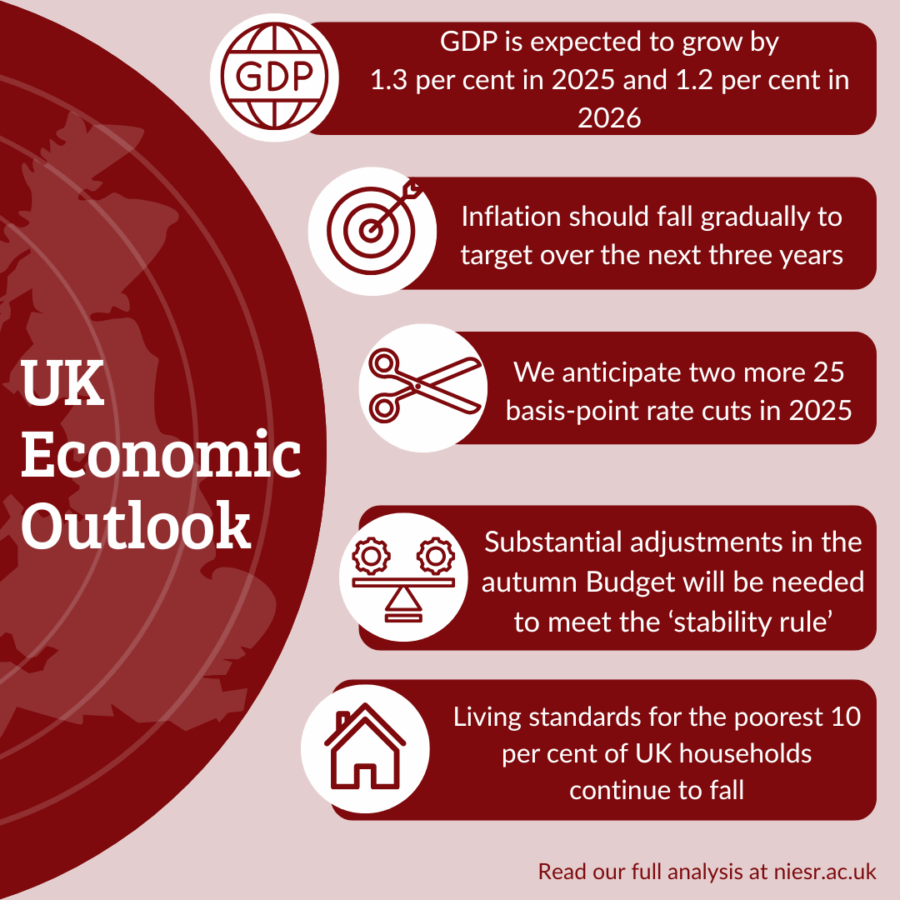The Chancellor's Trilemma
GDP is expected to grow modestly over the medium term – by 1.3 per cent in 2025 and 1.2 per cent in 2026 – as businesses report elevated uncertainty and trade policy volatility weighs on UK exports. However, supportive fiscal policy and the rebound in business investment in the first quarter of this year should continue to underpin growth.
 Pub. Date
Pub. Date
06 August, 2025
 Pub. Type
Pub. Type

Main points
- Inflation should fall gradually to target over the next three years, averaging 3.3 per cent in 2025 and 2.8 per cent in 2026. Persistent but slowing wage growth from residual labour market tightness, along with the NLW uprating in April 2025, are expected to exert further upward pressure on prices over the coming months.
- We anticipate two more 25 basis‑point rate cuts in 2025, followed by a further cut in 2026. Although an uncertain economic outlook may limit the Bank of England’s room for manoeuvre, we expect the MPC to continue its gradual easing, even with short-term upward pressure on prices this year.
- The Government is not on track to meet its ‘stability rule’, with our forecast suggesting a current deficit of £41.2 billion in the fiscal year 2029-30. Substantial adjustments in the Autumn Budget will be needed if the Chancellor is to remain compliant with her fiscal rules.
- The living standards of the poorest 10 per cent of UK households are falling. In 2024-25 they declined by 1.3 per cent compared with 2023-24 and they are still some 10 per cent lower than pre-Covid levels.
- We expect living standards to grow modestly in 2025-26 for middle- and high-income households but decline for the poorest 10 per cent. For these households, higher-thaninflation increases in housing and food costs are likely to outstrip income growth.
- The Government’s announced transport investment in UK regions largely overlaps with gaps in transport connectivity. While additional investment is very welcome, there are still questions about the scale of investment and a lack of alignment with housing to give people access to labour-market opportunities.










